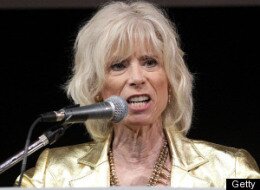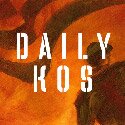A tiny Native American newspaper was born on July 1, 1981
American Indians — By Tim Giago (Nanwica Kciji) on June 28, 2010 at 05:59On July 1, 1981, a small, weekly newspaper was born on the Pine Ridge Reservation in South Dakota. The paper was named The Lakota Times for the people it would serve. My great admiration for the Navajo Times prompted me to add Times to the title.
I started the newspaper because the Indian reservation, with a population of more than 30,000, where I lived had no newspaper.
The Lakota Times grew quickly and soon was the largest weekly newspaper in the state of South Dakota. It filled a gap in Indian country that had never been readily addressed by the white-owned daily and weekly newspapers in the state. For the first time in the history of the state an Indian-owned newspaper began to take a close look at the lives of the Native people.
The mainstream media at the time did occasional stories on the people of the reservations, but for the most part those stories usually involved criminal activities or situations of national notoriety like the takeover at Wounded Knee in 1973.
Articles on the good things like the fledgling All Indian Basketball Tournament that would evolve into the Lakota Nation Invitational Tournament, an event that now draws thousands to the Rapid City Civic Center annually, was struggling to find its way with little support from the mainstream media. The Lakota Times filled that gap.
The newspaper began to publish articles about teachers, students, principals, superintendents, athletes and Native American achievers in all professions from doctors, to lawyers, and yes, even Indian chiefs. The Lakota people finally had a newspaper they could call their own and they read the articles voraciously taking pride in their community and schools, and they diligently read the opinion pages and compared their views on everything from politics to religion oftentimes shouted out in the editorials and columns.
Soon letters to the editor began to pour in and it seemed like the long and painful silence following the takeover at Wounded Knee in 1973 and the ensuing turmoil became topics of discussion rather than acts of violence. Lakota leaders like Elijah Whirlwind Horse, Joe American Horse and Stanley Looking Elk emerged and slowly began to pull the people together and the warring factions gradually began to unify.
The newspaper began a short time after the murder of two FBI agents at the reservation community of Oglala. There was still tension in the air between differing factions when the first edition of the Lakota Times hit the reservation communities on July 1, 1981.
As the editor and publisher I was determined to address the years of continued violence. I wrote editorials questioning the individuals involved in the violence and my newspaper soon became a target. First the windows of the newspaper were shot out on three occasions and in December of our first year in business, the newspaper was firebombed. One late and rainy night after putting the paper to bed, I had to dodge bullets as I left the newspaper office.
It was not uncommon for late night telephone calls to come to my home threatening death to me and my family.
But in the end, it took a courageous elected leader to address the attacks upon the Lakota Times. After the firebombing Oglala Sioux Tribal President Joe American Horse addressed the Tribal Council meeting and said, “From now on any violent action against the Lakota Times will be considered an attack upon the Oglala Sioux Tribe itself.” Things quieted down after that and the newspaper began its spectacular growth. It was soon the largest weekly newspaper in the state.
As the Lakota Times grew into a national Indian newspaper I met with my staff and held a contest to change the name to a more geographically national name. My managing editor, Avis Little Eagle, won the contest as she selected Indian Country Today for the new name. Nearly 30 years later, Indian Country Today is now based in Verona, N.Y., and is owned by the Oneida Nation. The Oneida have chosen to erase or ignore the rich, rich history of the newspaper and if you go to their “About Us” page, you will not find any of the things I have written in this column. And that’s too bad because they will never erase the fact that they had their humble birth on an Indian reservation in South Dakota and it was the Oglala Lakota people that made it a great newspaper.
To the many journalists and printers who got their start at the original Lakota Times and at the original Indian Country Today, I want to express my deepest wopila (thanks) for helping me make the Lakota Times into one of the greatest Indian newspapers in the history of Native America.
My Native Sun News humbly follows in the footsteps of those wonderful newspapers.
Photo courtesy of TIME/LIFE
Tags: Indian country, latoka, newspapersAuthor: Tim Giago (Nanwica Kciji) (34 Articles)

Tim Giago, an Oglala Lakota, is the editor and publisher of Native Sun News. He is the founder and first president of the Native American Journalists Association. He was a Nieman Fellow at Harvard with the Class of 1991. He was inducted into the South Dakota Newspaper Hall of Fame in 2008. His latest book, “Children Left Behind” is available through [email protected].



 Share This
Share This Tweet This
Tweet This Digg This
Digg This Save to delicious
Save to delicious Stumble it
Stumble it





 What will the justice system look like, with regard to race, in the year 2042?
What will the justice system look like, with regard to race, in the year 2042? Dr. Laura, meet Omar Thornton
Dr. Laura, meet Omar Thornton







